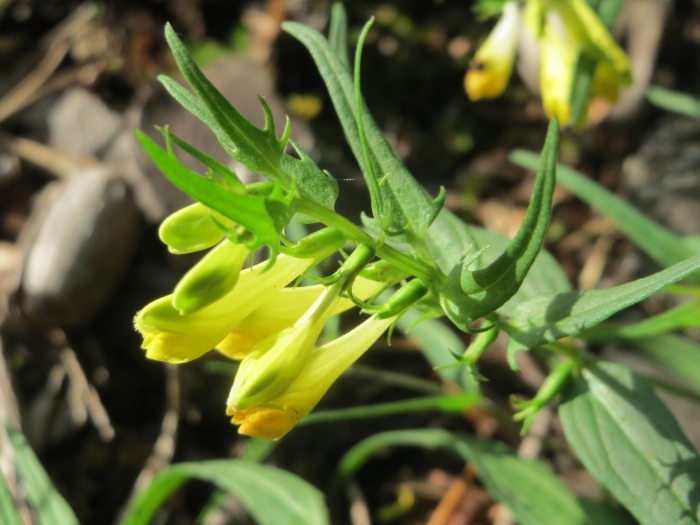Common Cow-Wheat
(Melampyrum pratense)
Common Cow-Wheat (Melampyrum pratense)
/
/

Andreas Rockstein
CC BY-SA 4.0
Image By:
Andreas Rockstein
Recorded By:
Copyright:
CC BY-SA 4.0
Copyright Notice:
Photo by: Andreas Rockstein | License Type: CC BY-SA 4.0 | License URL: http://creativecommons.org/licenses/by-sa/4.0/ | Rights Holder: Andreas Rockstein | Publisher: iNaturalist | Date Created: 2016-08-22T17:51:32-07:00 |

























Estimated Native Range
Summary
Melampyrum pratense, commonly known as Common Cow-wheat, is an annual herbaceous plant native to temperate regions of Europe and Asia, where it thrives in a variety of habitats including meadows, ancient woodlands, and forest clearings. It is particularly associated with well-drained, sandy or loamy soils in semi-shaded areas. The plant typically grows to a height of 15-50 cm and features lance-shaped leaves with spikes of yellow, tubular flowers that bloom from June to September, providing a modest yet attractive display.
Common Cow-wheat is valued for its ecological role, particularly in supporting the caterpillars of the heath fritillary butterfly, a species of conservation concern. Its seeds, equipped with an elaiosome, are dispersed by wood ants, a process known as myrmecochory. In cultivation, it can be used to create a naturalistic planting in woodland gardens or wildflower meadows. It requires minimal maintenance, thriving in part shade with moderate water and well-drained soils. While not commonly used in modern herbal medicine, it has a history of use in traditional Austrian medicine for treating rheumatism and blood vessel calcification. Gardeners should note that while it is not typically problematic, in some conditions it may self-seed prolifically.CC BY-SA 4.0
Common Cow-wheat is valued for its ecological role, particularly in supporting the caterpillars of the heath fritillary butterfly, a species of conservation concern. Its seeds, equipped with an elaiosome, are dispersed by wood ants, a process known as myrmecochory. In cultivation, it can be used to create a naturalistic planting in woodland gardens or wildflower meadows. It requires minimal maintenance, thriving in part shade with moderate water and well-drained soils. While not commonly used in modern herbal medicine, it has a history of use in traditional Austrian medicine for treating rheumatism and blood vessel calcification. Gardeners should note that while it is not typically problematic, in some conditions it may self-seed prolifically.CC BY-SA 4.0
Plant Description
- Plant Type: Herb
- Height: 0.25-0.8 feet
- Width: 0.25-1.75 feet
- Growth Rate: Moderate
- Flower Color: Yellow
- Flowering Season: Summer
- Leaf Retention:
Growth Requirements
- Sun: Full Sun, Part Shade
- Water: Medium
- Drainage: Medium, Fast
Common Uses
Bee Garden, Butterfly Garden, Low Maintenance
Natural Habitat
Temperate regions of Europe and Asia, including meadows, ancient woodlands, and forest clearings
Other Names
Common Names: Field Cow-wheat
Scientific Names: , Melampyrum pratense, Melampyrum ceretanum, Melampyrum lineare, Melampyrum lineare, Melampyrum pratense subsp. divaricatum, Melampyrum pratense subsp. vulgatum, Melampyrum pratense var. castanetorum, Melampyrum pratense var. chrysanthum, Melampyrum vulgare,
GBIF Accepted Name: